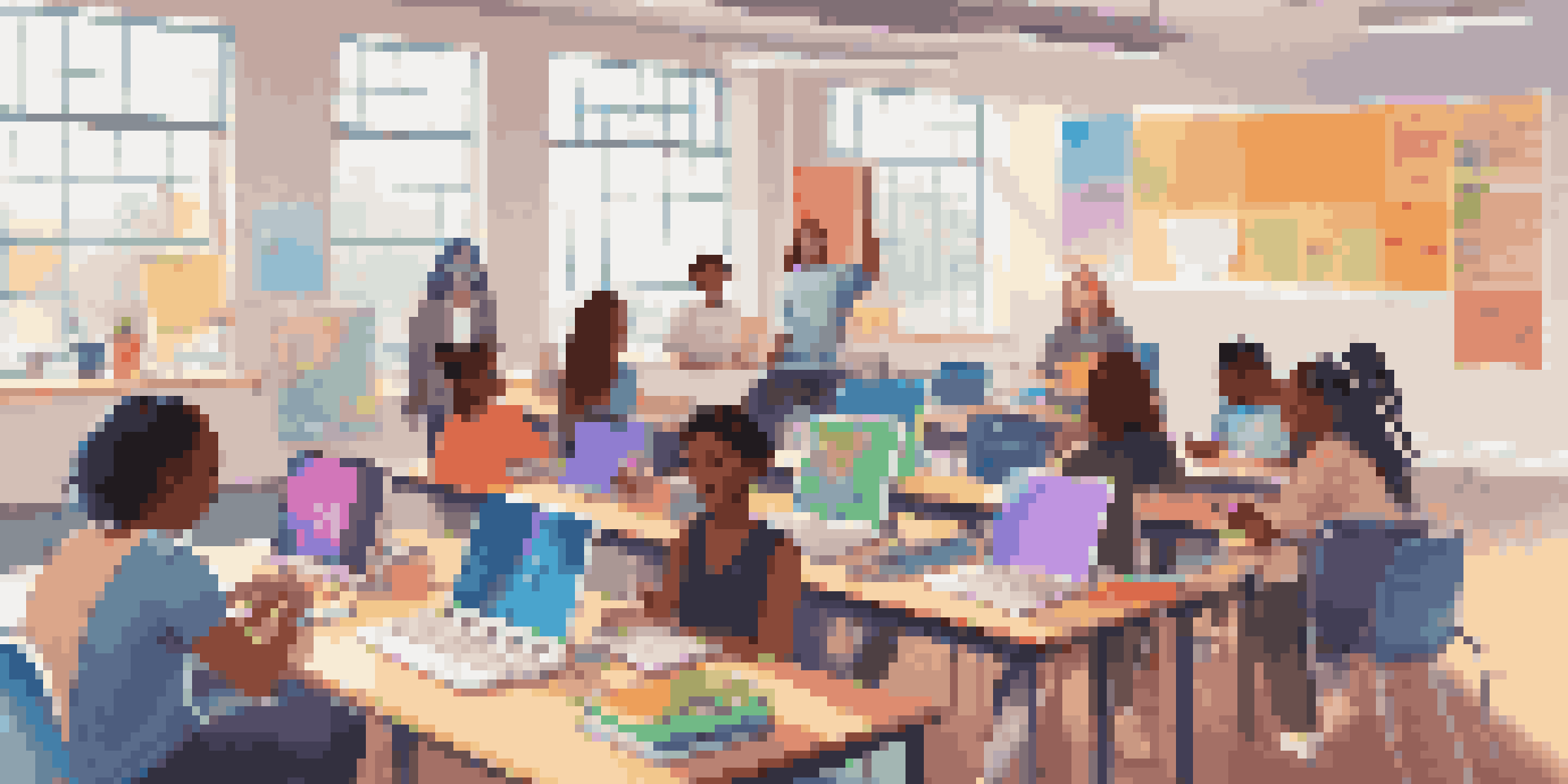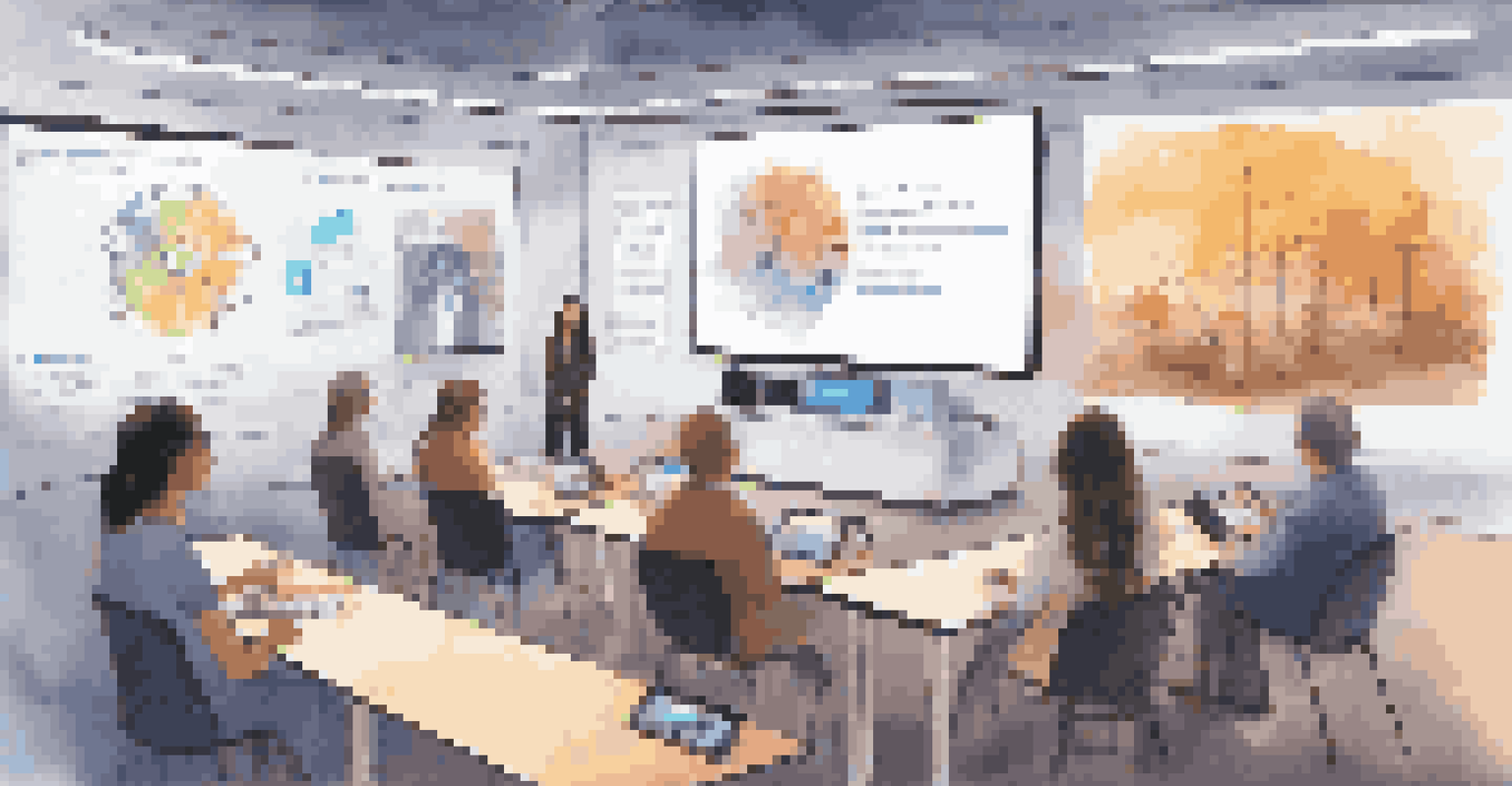The Impact of Remote Work on Educational Curriculum Design

Understanding Remote Work and its Rise in Popularity
Remote work has become a defining trend in today's workforce, largely accelerated by recent global events. With technology allowing employees to connect from anywhere, many organizations have embraced flexible work arrangements. This shift has not only transformed traditional job roles but also sparked a reevaluation of educational practices. As we delve into how remote work is reshaping curriculum design, it's important to recognize the underlying factors driving this change.
The future of work is not about the office versus remote, it's about how to create a culture that allows flexibility and productivity regardless of location.
The flexibility of remote work means that learning can occur anytime and anywhere, breaking geographical barriers. This has led to a demand for educational programs that reflect this new reality, pushing institutions to rethink how they deliver content. For instance, a student in a rural area can now access the same resources as one in a bustling city, highlighting the need for inclusive and accessible curriculum design. The implications for educators are significant as they adapt to these evolving needs.
As remote work becomes more entrenched in organizational culture, educators must also consider the skills necessary for students to thrive in this environment. Skills such as self-discipline, digital literacy, and effective communication are now more valuable than ever. Consequently, educational institutions are tasked with integrating these competencies into their curriculum, ensuring students are well-prepared for the modern workforce.
The Shift Towards Digital Learning Platforms
One of the most visible changes in educational curriculum design is the increased reliance on digital learning platforms. With remote work emphasizing virtual collaboration, many schools and universities have turned to online tools to facilitate learning. Platforms like Google Classroom and Zoom have become staples, allowing for seamless communication between educators and students. This shift has led to a more interactive and engaging learning experience, but it also raises questions about accessibility and equity.

Digital platforms make it easier to incorporate multimedia resources into the curriculum, catering to diverse learning styles. For example, video lectures, interactive quizzes, and discussion forums can enhance the educational experience, making it more dynamic than traditional methods. However, educators must be mindful of the digital divide that exists, ensuring that all students have access to the necessary technology and internet connectivity. This consideration is crucial in creating a truly inclusive curriculum.
Remote Work Drives Curriculum Change
The rise of remote work has led educational institutions to rethink curriculum design, focusing on flexibility and accessibility.
Furthermore, the integration of technology into education has prompted a reevaluation of assessment methods. Traditional exams may not accurately reflect a student's understanding in a remote learning context. As a result, educators are exploring alternative assessment strategies, such as project-based learning and peer evaluations, which can offer a more comprehensive view of student progress and engagement.
Incorporating Soft Skills in Curriculum Design
As remote work cultures flourish, the importance of soft skills in the workplace has gained significant attention. Employers are increasingly looking for individuals who can collaborate effectively, communicate clearly, and adapt to changing circumstances. This trend has prompted educational institutions to prioritize soft skills within their curriculum, preparing students for the demands of remote work environments. Skills like teamwork, critical thinking, and emotional intelligence are now essential components of a well-rounded education.
Education is not preparation for life; education is life itself.
Incorporating soft skills into the curriculum can take various forms, such as group projects and interactive discussions. These activities not only foster collaboration but also encourage students to express their ideas and learn from one another. By simulating real-world scenarios, educators can help students develop these essential skills in a supportive environment. This approach bridges the gap between academic learning and practical application, making education more relevant.
Moreover, the focus on soft skills aligns with the growing recognition that education should prepare students for life beyond the classroom. The ability to navigate interpersonal relationships and work effectively in teams is crucial in a remote work setting. Therefore, educators must be intentional about designing curriculum that fosters these skills in a meaningful way, ensuring that students are not only academically proficient but also well-equipped for their future careers.
Challenges of Remote Learning for Curriculum Developers
While the shift to remote work presents exciting opportunities for curriculum design, it also comes with its share of challenges. For educators, adapting traditional teaching methods to an online format can be daunting. This transition requires careful consideration of how to maintain student engagement and motivation, especially in a virtual setting. Curriculum developers must be innovative in their approach, creating lessons that are both informative and captivating.
Another challenge is the need for continuous professional development among educators. As technology evolves, teachers must stay current with the latest tools and best practices for remote instruction. This ongoing learning process can be time-consuming, yet it is vital for effective curriculum implementation. Institutions must invest in training programs that equip educators with the skills they need to succeed in this new landscape.
Digital Platforms Enhance Learning
The increased reliance on digital learning platforms has transformed educational engagement while highlighting the need for equitable access to technology.
Finally, assessing student learning in a remote environment poses unique challenges. Traditional assessment methods may not provide an accurate picture of student understanding, prompting educators to explore alternative evaluation techniques. This shift requires flexibility and creativity in curriculum design, ensuring that assessments are aligned with learning objectives and accurately reflect student performance.
The Role of Collaboration in Curriculum Design
Collaboration is a cornerstone of successful curriculum design, especially in the context of remote work. Educators, administrators, and industry professionals must work together to create a curriculum that meets the needs of students and aligns with workforce demands. This collaborative approach ensures that educational programs remain relevant and responsive to the changing landscape of work. By engaging multiple stakeholders, institutions can leverage diverse perspectives and expertise.
For example, partnerships with local businesses can provide valuable insights into the skills and knowledge required in the job market. These collaborations can inform the curriculum, ensuring that students graduate with the competencies that employers seek. Additionally, involving students in the curriculum development process can lead to more engaging and meaningful educational experiences. When students have a voice in shaping their learning, they are more likely to take ownership of their education.
Furthermore, collaborative efforts can extend beyond the classroom, fostering a sense of community among educators and students. Online forums and networking opportunities can facilitate connections, allowing educators to share resources and best practices. This sense of collaboration enriches the learning environment and can lead to innovative approaches to curriculum design that benefit all involved.
Adapting to Diverse Learning Styles in Remote Education
In a remote learning environment, recognizing and accommodating diverse learning styles is more important than ever. Each student brings a unique set of strengths, preferences, and challenges to their education. Curriculum developers must consider these differences when designing remote learning experiences. By incorporating a variety of instructional methods, educators can create an inclusive environment that supports all learners.
For instance, while some students may thrive in a visual learning format, others may prefer hands-on activities or auditory instruction. Providing a mix of resources—such as videos, interactive activities, and written materials—can cater to these various preferences. This approach not only enhances student engagement but also promotes deeper understanding of the material. It encourages students to explore content in ways that resonate with them personally.
Soft Skills Are Essential for Success
As remote work becomes the norm, educators are prioritizing the integration of soft skills into the curriculum to better prepare students for future careers.
Moreover, understanding that students may face different challenges when learning remotely is essential. Factors such as home environment, access to technology, and personal circumstances can impact their learning experience. By fostering open communication and offering support, educators can help students navigate these challenges and ensure they have the tools they need to succeed in a remote learning setting.
The Future of Curriculum Design in a Remote Work Era
As we look to the future, it’s clear that the impact of remote work on educational curriculum design will continue to evolve. The lessons learned during this transition will shape how curricula are developed, emphasizing flexibility, accessibility, and adaptability. Educators must remain agile, ready to respond to the changing needs of students and the workforce. This forward-thinking approach will be essential in preparing students for an uncertain future.
Emerging technologies, such as artificial intelligence and virtual reality, have the potential to revolutionize curriculum design further. These tools can enhance the learning experience, offering new ways for students to engage with content and collaborate with peers. As technology continues to advance, educators will need to embrace innovation and integrate these tools thoughtfully into their curricula, ensuring that they enhance rather than detract from the learning process.

Ultimately, the future of curriculum design in a remote work era will hinge on collaboration, creativity, and a deep understanding of student needs. By remaining committed to continuous improvement and fostering a supportive learning environment, educators can create curricula that not only meet current demands but also inspire and empower the next generation of learners.